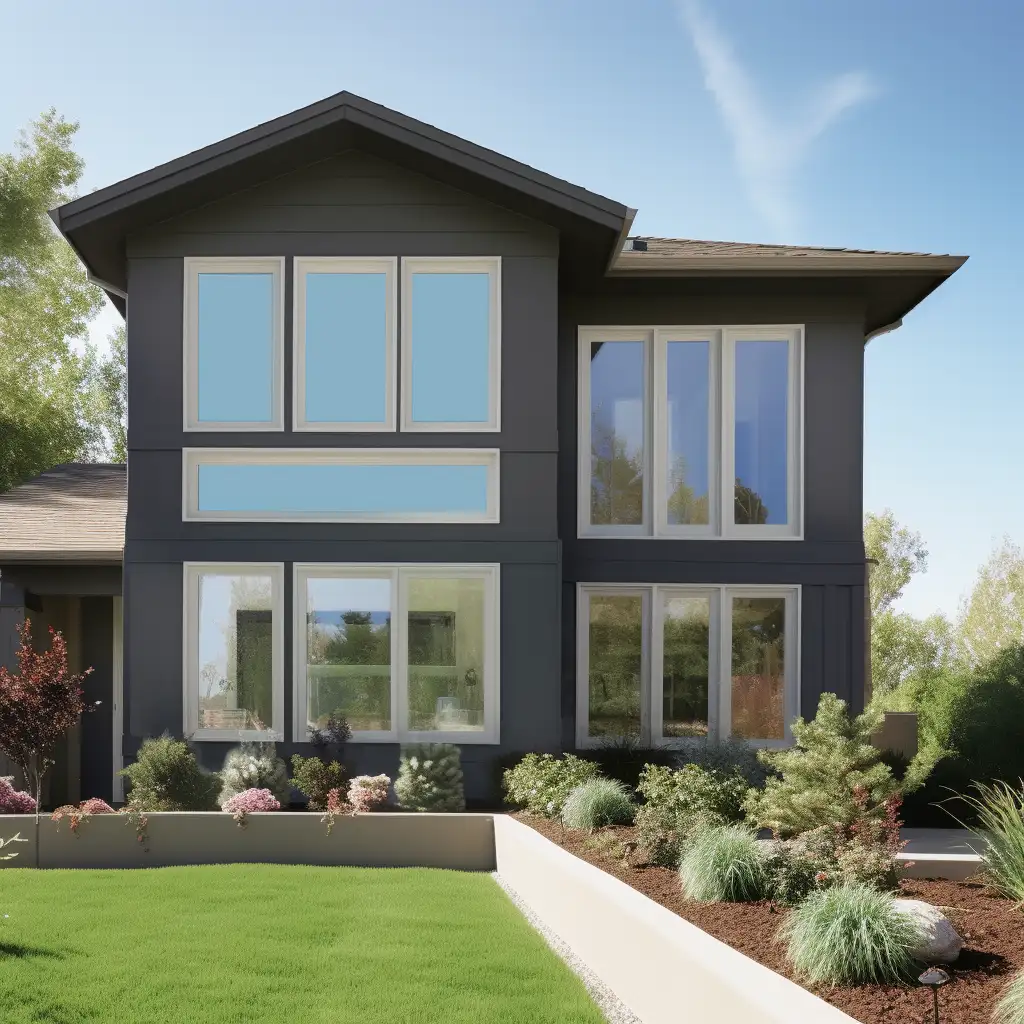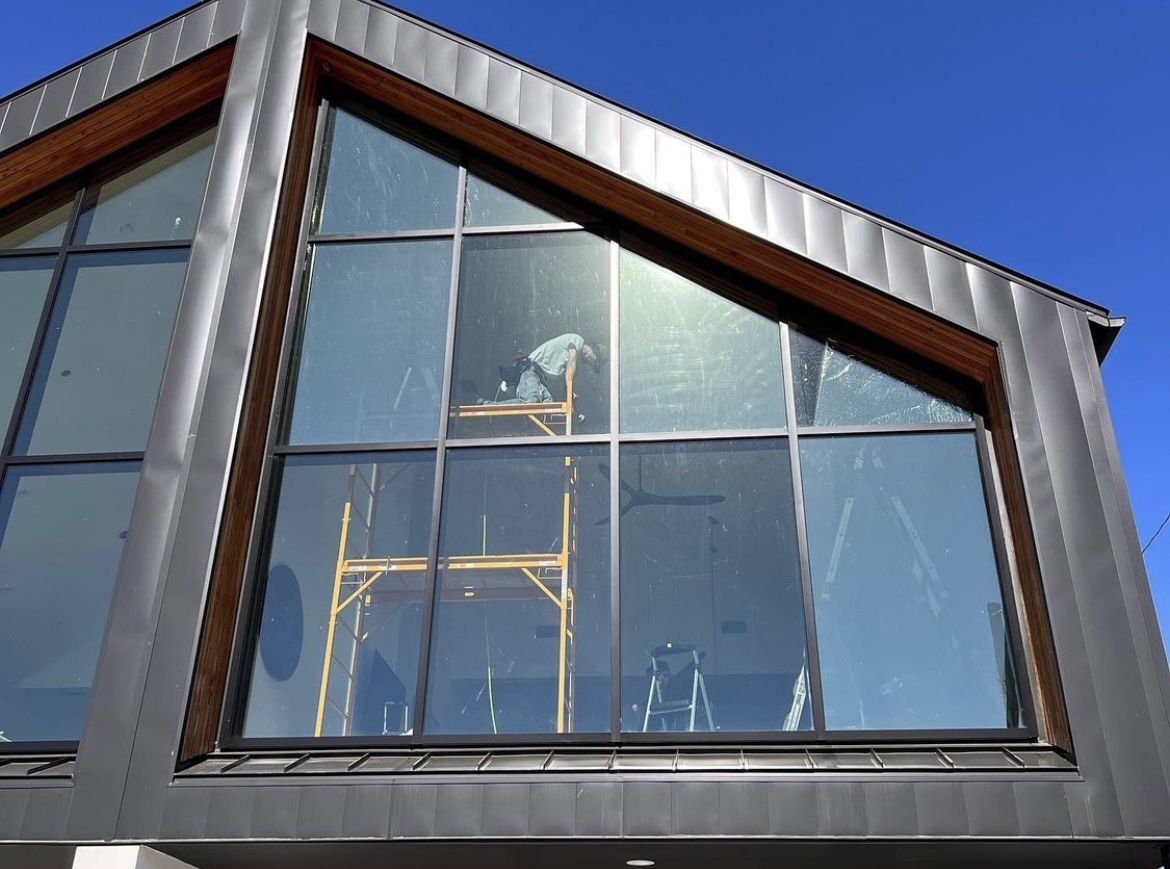How Residential Window Tinting Improves Your Home's Power Effectiveness
Residential window tinting provides a compelling option for home owners seeking to improve power efficiency within their living spaces. By using specialized films to windows, it successfully minimizes warm transfer, therefore supporting interior temperatures and decreasing the requirement for too much home heating or air conditioning.
Understanding Window Tinting
Comprehending home window tinting is necessary for house owners seeking to improve both comfort and power effectiveness in their living rooms. Residential Window Tint. Home window tinting includes the application of a thin film to the inside or outside surface of glass windows. This film can substantially modulate the amount of sunshine and heat that gets in a home, therefore affecting interior climate problems
There are different kinds of home window tinting films offered, each with distinct residential or commercial properties. As an example, colored films take in solar energy, while reflective films disperse it away from the glass surface area. Ceramic movies offer an equilibrium of visibility and warmth rejection, making them a preferred selection amongst house owners. The effectiveness of window tinting is frequently gauged by its Visible Light Transmission (VLT) percentage, which shows just how much light can travel through the film.
Advantages of Power Effectiveness
Home window tinting not just boosts appearances yet additionally plays a considerable function in improving power efficiency within domestic rooms. By reducing warmth transfer through home windows, tinted films produce a more secure indoor climate, which can bring about substantial reductions in energy intake for heating & cooling. This power performance translates right into lower energy expenses, providing home owners with significant lasting financial savings.

Additionally, home window tinting improves the comfort of living rooms. By reducing glow and obstructing harmful UV rays, tinted windows create an even more enjoyable atmosphere, which can lead to boosted wellness for residents. The protection against UV rays additionally aids preserve furniture and flooring from fading, adding to the durability of household things.
Exactly How Tinting Functions
Tinting movies run via a mix of advanced products and innovations created to manage the quantity of solar energy getting in a home. Largely made up of polyester, these films often integrate metallic or ceramic bits that mirror and take in warmth. This double capacity allows them to considerably lower the infiltration of ultraviolet (UV) rays and infrared radiation while allowing noticeable light to travel through.
The effectiveness of home window tinting is determined by its solar heat gain coefficient (SHGC), which indicates just how much solar power is transmitted through the home window. Reduced SHGC values are better as they denote higher warm being rejected. In browse around this site addition, window colors can include a selection of tones, enabling homeowners to tailor their aesthetic choices while boosting power effectiveness.
Moreover, these films work as a barrier, avoiding warm loss during colder months by mirroring interior warmth back into the home. This thermal insulation impact enhances the air conditioning advantages gained throughout warmer months, adding to a well balanced interior climate year-round. By handling solar power successfully, residential home window tinting not just boosts comfort however also plays a vital function in decreasing energy consumption and reducing utility expenses.
Picking the Right Color

There are various sorts of window movies offered, including colored, metalized, and ceramic. Dyed movies are cost-effective yet may have limited toughness. Metalized films use better warmth being rejected but can disrupt electronic signals. Ceramic films provide superb heat control without endangering exposure and are very resilient, making them a preferred selection.
Noticeable light transmission (VLT) is one more critical aspect, as it suggests the amount of all-natural light that can travel through the tinted glass. House owners need to choose a tint with a VLT that complements their lights choices while still providing sufficient glare decrease.
Additionally, examining the solar warmth gain coefficient (SHGC) can aid establish how well a tint can block heat from sunshine. A reduced SHGC indicates far better warmth control, eventually enhancing energy efficiency.
Installment and Upkeep Tips
Proper installment and maintenance are essential parts in taking full advantage of the advantages of residential home window tinting. Experts also make use of specialized tools and techniques, which can enhance the resilience and effectiveness of the tint.
Adhering to installment, upkeep is crucial to prolong the life of the window movie. It is advised to wait at least 30 days before cleaning the tinted windows to enable the sticky to heal totally. When cleaning, make use of a soft towel and a mild, ammonia-free cleaner to prevent harming the movie. you could try here Stay clear of unpleasant products that might scratch the surface area.
Addressing these concerns promptly can stop additional damages and keep power performance. By sticking to these installment and upkeep pointers, property owners can ensure their window tinting proceeds to give considerable power savings and convenience for years to come.
Conclusion
In final thought, domestic window tinting serves as an efficient solution for enhancing power effectiveness within homes. By reducing warm transfer and go obstructing dangerous UV rays, window films contribute to reduce power consumption and enhanced interior comfort.
Home window tinting involves the application of a thin movie to the inside or exterior surface area of glass windows. By lowering heat transfer through home windows, colored movies create a much more stable interior environment, which can lead to significant reductions in energy intake for home heating and cooling.The efficiency of home window tinting is gauged by its solar warmth gain coefficient (SHGC), which indicates exactly how much solar power is sent via the window. By managing solar energy properly, property home window tinting not just boosts comfort however likewise plays a crucial role in decreasing energy usage and lowering energy expenses.
By minimizing warmth transfer and obstructing damaging UV rays, window films contribute to lower power intake and enhanced interior convenience.